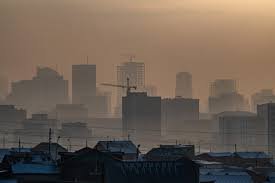With Delhi’s air quality slipping into the ‘Poor’ category, the Commission for Air Quality Management (CAQM) has triggered Stage-I of the Graded Response Action Plan (GRAP) across the National Capital Region. This decision comes as Delhi’s Air Quality Index (AQI) touched 213, raising concerns among health experts and environmental agencies.
The move is aimed at preemptively controlling pollution before it reaches critical levels. If you’re a resident, commuter, or policymaker in Delhi NCR, here’s what you need to know.
What Is GRAP and Why It’s Important for Delhi NCR
GRAP is a dynamic framework introduced by the Environment Pollution (Prevention and Control) Authority in 2017 and now enforced by CAQM. It allows for phased, data-driven interventions based on real-time air quality readings.
The four stages of GRAP escalate depending on pollution levels:
- Stage I: Poor (AQI 201–300)
- Stage II: Very Poor (AQI 301–400)
- Stage III: Severe (AQI 401–450)
- Stage IV: Severe+ (AQI above 450)
Currently, only Stage-I is active, but CAQM has cautioned that higher stages could be invoked swiftly if the situation worsens.
What Will Change in Delhi NCR Under GRAP Stage-I
The Stage-I guidelines primarily aim to control dust, emissions, and public exposure to pollutants. Key measures now in force include:
Construction and Demolition Oversight
- All construction sites must install dust screens and sprinkle water regularly.
- On-road storage of building materials is banned.
- Use of anti-smog guns and wind barriers is mandated for large projects.
Pollution from Vehicles and Generators
- Strict enforcement of Pollution Under Control (PUC) certification for vehicles.
- Diesel generator sets discouraged, especially for non-emergency use.
- Traffic police to increase checks for visibly polluting vehicles.
Civic and Public Response Measures
- Municipal bodies must carry out mechanized road sweeping and regular waste clearance.
- Open burning of garbage or leaves is prohibited and will attract fines.
- Awareness campaigns in schools, RWAs, and public spaces are encouraged.
How Delhiites Can Help Curb Pollution
While regulatory bodies have stepped up enforcement, CAQM has made a direct appeal to residents. Everyone is urged to:
- Switch to public transport, carpool, or use bicycles.
- Minimize outdoor exercise, especially for vulnerable groups like the elderly and children.
- Report violations such as garbage burning or illegal dumping using official apps like Green Delhi, SAMEER, and 311 App.
- Avoid using diesel generators unless absolutely necessary.
A CAQM official noted,
“This is a critical period where citizen cooperation can make or break the effectiveness of pollution control.”
Expert Insight: Health Impacts of Poor Air Quality
According to Dr. Meena Goyal, Pulmonologist at AIIMS Delhi,
“Even AQI in the ‘Poor’ range can aggravate asthma, bronchitis, and heart conditions. Those with chronic respiratory issues should wear N95 masks and avoid morning walks outdoors.”
Hospitals in Delhi NCR have reported a rise in respiratory OPD visits, particularly among children and the elderly.
Government Agencies in Action
The Delhi Pollution Control Committee (DPCC), PWD, MCD, and Transport Department are working round-the-clock to ensure compliance. Drone surveillance, real-time pollution mapping, and deployment of mobile enforcement teams are also being planned.
CAQM has also asked DISCOMs to ensure continuous electricity to reduce reliance on diesel generators in residential and commercial areas.
Will GRAP Stage-II Follow Soon?
Meteorological trends suggest that stagnant wind flow, rising temperatures, and ongoing vehicular activity may lead to further AQI deterioration. If the index crosses 300, Stage-II will be enforced, leading to:
- Bans on diesel generator use (except for emergency services)
- Closure of brick kilns and hot mix plants
- Restrictions on truck entry (except essentials)
Why This Year Is Different
Environmental analysts say that the early invocation of GRAP highlights a concerning trend: pollution is no longer seasonal. Climate variability, urban expansion, and vehicular load are contributing to prolonged periods of poor air quality even before winter sets in.
FAQs: GRAP Stage-I and What You Should Know
What does GRAP Stage-I mean for construction workers and builders?
Builders must implement dust control measures and can face penalties for non-compliance. Small-scale repairs may continue if they don’t produce visible dust.
Can I run my backup generator at home or in offices?
You should avoid using diesel generators unless necessary. DISCOMs are directed to maintain uninterrupted power to eliminate the need.
How long will Stage-I remain active?
It depends on AQI trends. If air quality improves, restrictions may be lifted. Otherwise, expect escalation to Stage-II.
What legal actions are taken against violators?
Fines, site shutdowns, and criminal complaints can be filed for repeated or major violations.
Are schools or transport systems affected under Stage-I?
Not at this stage. However, if the situation worsens and Stage-III or IV is invoked, restrictions may impact school operations and diesel buses.
Final Thoughts
Stage-I activation of GRAP is both a wake-up call and a chance to prevent another winter pollution crisis. With enforcement tightening across Delhi NCR, authorities are trying to act early—but their success depends heavily on public responsibility.
If you’re in Delhi, Noida, Ghaziabad, Gurugram, or Faridabad, now is the time to stay informed, act responsibly, and contribute to cleaner air for all.

